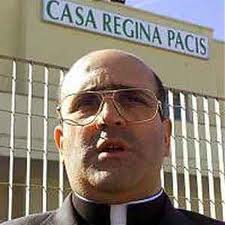The Human Trafficking Charity Of Padre Cesare
Once in a blue moon in life doorways open and paths emerge that, though quite unexpected, lead you down a pathway that you know, deep down inside, you must go. Those who serve others as relief workers and counselors experience this perhaps more than most. They have discovered that you can’t effectively engage life on the cutting edge unless you are willing to go where that edge calls you. Like water seeking lower ground, so needs and crises develop, taking on a life of their own.
Just such a scenario unfolded in the life of Padre Cesare Lo Deserto, a Roman Catholic priest who had worked among the very poor in Brazil and Rwanda before returning to his homeland in 1995 to open a shelter for refugees in San Foca in southern Italy, dubbing the shelter Regina Pacis—“queen of peace.”
As it just so happened, San Foca is located on the Balkan Trail and top dead center to one of the busiest human trafficking routes in the world.
David Batstone, in his seminal book “Not For Sale” describes it well:
Though Padre Cesare’s shelter was designed for refugees, an unexpected trend happened almost overnight as girls from Eastern Europe by the dozens began showing up at his door. At the same tiome he couldn’t help but notice a significant increase in the number of Slavic girls working the street of San Foca and nearby coastal towns of Lecce and Brindisi as prostitutes. The girls told their stories: tragic personal accounts of abduction, rape and exploitation by traffickers.
Today Padre Cesare stands as a champion and advocate for human trafficking victims in Eastern Europe. David Batstone refers to him as an “unlikely abolitionist,” because, the fact is, he never really thought he would be undermining the sex syndicate in Europe.
As Batstone points out, Padre Cesare decided to take a deeper look at how he could more effectively address the human trafficking problem, “like a sage environmentalist who finds poisoned fish at the end of a stream. As concerned as the environmentalist might be for the ill fish, he would go upstream and eliminate the source that pollutes the waters.”
His strategy was to go to the very source of the human trafficking stream and focus his efforts in eastern Europe, planting Regina Pacis centers in Moldova and Romania to carry out a broad range of anti-slavery activities.
May others, inspired by the love and passion of this modern day hero, follow in his footsteps with similar courage, conviction and dedication!


